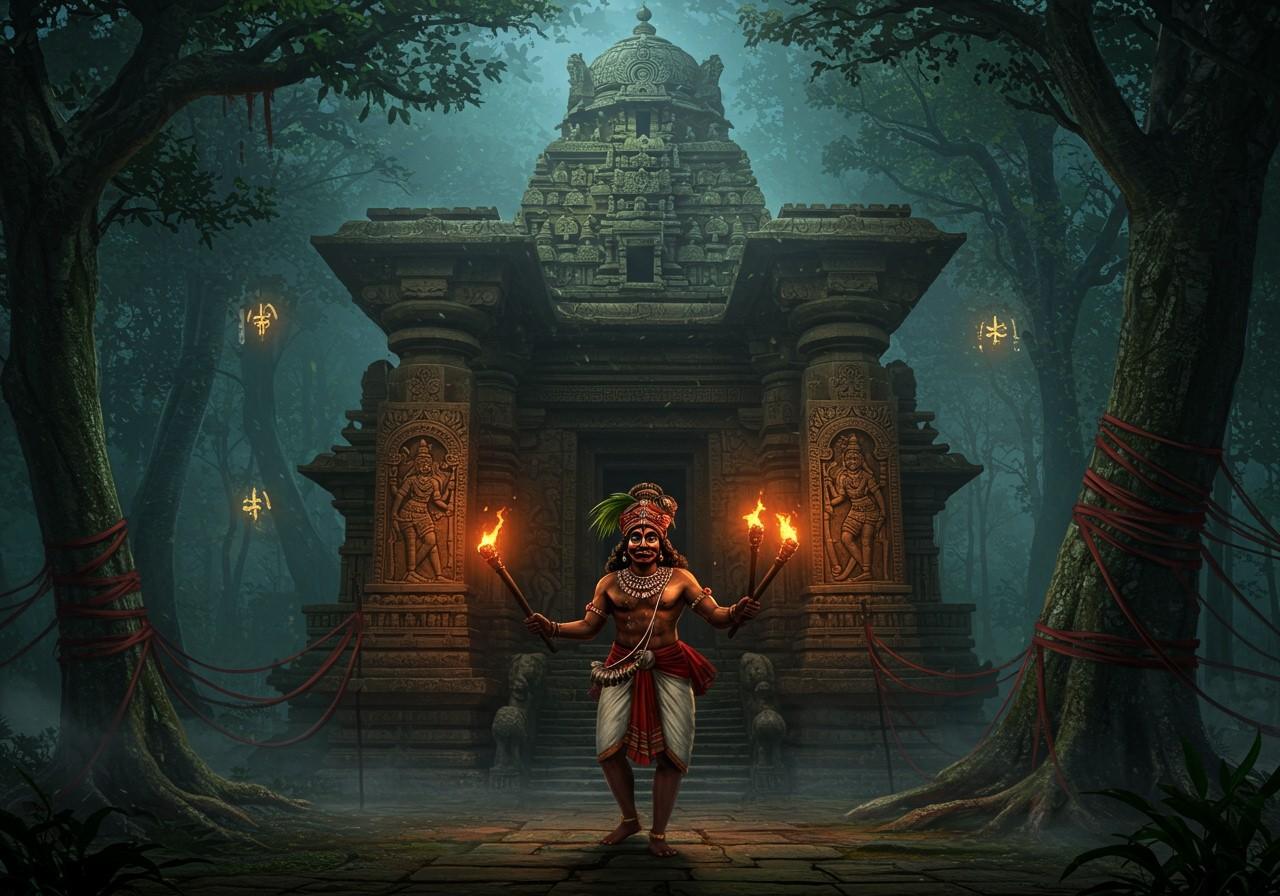
The Kadamba Dynasty, a prominent force in ancient India, significantly shaped the cultural and political landscape, particularly in the region now known as Karnataka. Their reign, spanning from the 4th to the 6th centuries CE, left an indelible mark on the region’s history, architecture, and traditions. Discover the fascinating story of the Kadambas, their connection to the historically rich region of Kantara, and how their legacy continues to resonate today.
The Rise of the Kadambas
Around 345 CE, Mayurasharma, a learned Brahmin who transitioned into a warrior, established the Kadamba Dynasty. Their capital, Banavasi, strategically positioned, facilitated their expansion and influence. This dynasty played a pivotal role in the shift from tribal governance to a more structured monarchy in Southern India.
- Architectural Prowess: The Kadambas showcased remarkable architectural skills, evident in the temples and inscriptions they left behind. These structures stand as testaments to their advanced understanding of design and engineering, influencing architectural styles for centuries to come. Their unique “Kadamba Shikara,” characterized by pyramid-shaped towers and intricate carvings, became a hallmark of their architectural contributions.
- Cultural Influence: The Kadambas laid the groundwork for subsequent powerful dynasties, including the Chalukyas and Hoysalas. Their patronage of arts and literature fostered a vibrant cultural atmosphere, contributing significantly to the development of the Kannada language and shaping the cultural landscape of the region. Their influence extended beyond their reign, inspiring and shaping the artistic and cultural expressions of future generations.
Kantara: A Crossroads of Kadamba History
Kantara, more than just a geographical designation, played a crucial role in the Kadamba narrative. Archaeological discoveries, including ruins and inscriptions, reveal a deep connection between Kantara and Kadamba settlements, highlighting the region’s significance in their history.
- Strategic Importance: Kantara’s location held significant strategic value for the Kadambas, influencing both trade and military operations. Situated along important trade routes, it facilitated commerce and economic growth. Its strategic position also provided defensive advantages, making it a key region for military campaigns and the consolidation of power.
- Architectural Harmony: Kantara’s landscape played a role in shaping the unique architectural style of the Kadambas. The existing temple structures in the area beautifully reflect the harmonious blend of Kadamba design principles and the natural surroundings. The integration of the natural environment into their architectural designs showcases their appreciation for the beauty and power of nature.
Kadamba Ruins: Echoes of the Past
The remnants of the Kadamba Dynasty in Kantara continue to whisper stories of a bygone era. Preservation efforts are underway to protect these invaluable historical sites. The Madhukeshwara Temple in Banavasi, with its intricate carvings, stands as a prime example of Kadamba artistry.
- Windows to the Past: These ruins offer invaluable glimpses into the socio-political structures and religious practices of the Kadamba period. They serve as important resources for historians and archaeologists, providing insights into governance, social hierarchies, and the daily lives of people during that time.
- Living Traditions: Karnataka honors its Kadamba heritage through vibrant festivals and cultural events. These celebrations not only commemorate the dynasty’s contributions but also connect present generations with their historical roots, fostering a sense of continuity and cultural identity.
The Enduring Cultural Legacy
The Kadamba Dynasty’s cultural influence continues to permeate modern India. Their architectural innovations inspire contemporary South Indian temple designs, showcasing the timelessness of their aesthetic principles.
- Living Traditions: Kadamba traditions are interwoven into regional festivals and rituals, enriching cultural practices with historical depth and meaning. These customs, passed down through generations, serve as a living testament to the enduring legacy of the Kadamba Dynasty.
- Literary Heritage: The preservation of Kadamba-era literature in Kannada and Sanskrit ensures that the wisdom and artistic expressions of the past remain accessible to present and future generations. These texts offer valuable insights into the intellectual and cultural climate of the time.
Poojn.in: Preserving Sacred Traditions
Poojn.in, India’s leading online store for cultural and religious goods, offers a wide selection of authentic puja items that connect you to the rich spiritual traditions of the Kadamba Dynasty and the Kantara region. Our collection includes:
- Traditional brass lamps (deepa)
- Copper and brass puja vessels
- Natural incense and dhoop
- Organic kumkum and chandana
- Cotton wicks and pure ghee
- Panchaloha puja thalis
Visit www.poojn.in to explore our full range of products and experience the essence of these ancient traditions. Shop now and bring the sanctity of these traditions into your home.
A Living Legacy
The Kadamba Dynasty’s story and its connection to Kantara are more than just historical footnotes; they form a living legacy that enriches our present. Through preservation efforts, cultural celebrations, and digital platforms, we keep the spirit of the Kadambas alive. This connection fosters regional pride and historical awareness, inviting us to explore and appreciate the depth of our heritage.
FAQs
What is the Kadamba Dynasty? The Kadamba Dynasty was an ancient Indian royal lineage that governed parts of present-day Karnataka from the 4th to the 6th centuries CE. They are renowned for their contributions to architecture, culture, and administration.
What is Kantara’s significance in Kadamba history? Kantara held strategic and cultural importance for the Kadambas. Archaeological findings in the region provide insights into their influence and heritage.
Where can I find Kadamba Dynasty ruins? Kadamba ruins, including temples and inscriptions, can be found across Karnataka, notably in Banavasi, Halasi, and Goa.
What is the Madhukeshwara Temple? The Madhukeshwara Temple in Banavasi is a renowned temple built by the Kadambas, showcasing their unique architectural style.
Kandariya Mahadeva Temple
Kodandarama Temple Chikmagalur


